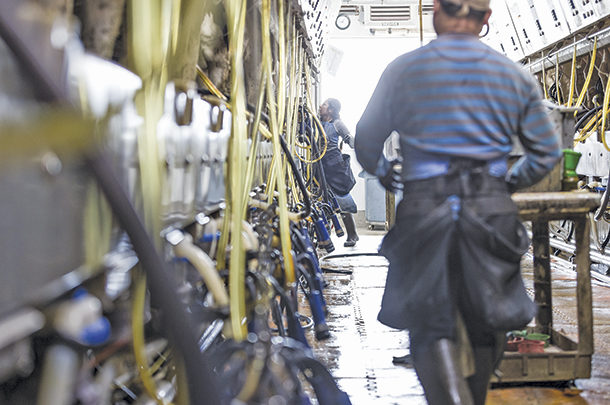The milking parlor is the “heart” of your operation. It’s the harvest point for you and your herd’s hard work – but with all the other complexities of running a dairy, it can be taken for granted and overlooked.
Although modern milking systems are very reliable, without proper management you can miss minuscule but crucial problems that can escalate quickly. Poorly maintained and operated milking equipment can lead to unproductive or incomplete milking, poor milk quality and multiple health issues. So how can you efficiently evaluate cows, equipment and people to make sure your system is working well? Let’s discuss.
Managing the milking parlor is a vast responsibility with numerous moving parts that need constant attention. Therefore, conducting a parlor audit has never been more important. When it comes to protocols, two key factors come to mind: maintaining the equipment and working with the cows themselves. It is important to make sure your parlor is set up correctly as well as maintained. A good relationship with your equipment supply company is vital. This relationship can alleviate some of the maintenance and reduce the workload on your staff. Each herd is different, and no one setting applies at every farm. To best fit the needs of your herd and the equipment you are using, your supplier can help you make and maintain the correct settings on your vacuum and pulsation systems. To determine how well your equipment is performing, make sure you know your maintenance schedule and have your equipment checked on a regular basis. Also, do not forget the small things, like making sure your milk hoses are being changed regularly and the oil is being changed in your vacuum pump.
The second key factor is the cows themselves. Cows can show us many different things based on their behavior, body condition and data reports from your parlor management software. When evaluating cows in the parlor, here are the main questions to ask yourself:
- How clean are the cows?
- How clean are teat ends?
- Is the milking routine or equipment affecting the teat ends?
It’s important to have a veterinarian involved with your milk quality program who can create treatment and prevention protocols based off the pathogens in your herd, evaluate and monitor teat scores, and help you evaluate milking technician performance.
Goals that should be met for optimal parlor performance
Proper milking procedures, attention to detail and a clean environment are essential to minimize health concerns and maximize milk production. Milking should be done by people who are responsible, well trained and pay attention to detail. Although every dairy is different, here are some baseline goals you should evaluate to make sure everyone is hitting their mark.
- Stripping: According to the National Mastitis Council, gentle but firm removal of three to four streams of milk from each teat before milking is known as “stripping.” Careful stripping of milk during the preparation procedure is imperative for stimulation of milk letdown and aids in mastitis control when milk abnormalities are noticed.
- Pre-dip contact time: Ensure a minimum of 30 seconds to allow for a proper kill time for any pathogens on the teat.
- Pre-dip coverage: Make sure the entire teat is covered when applied.
- Prep-lag time: The milking unit should be applied 90 seconds after stimulation, according to the Holstein Foundation. A herd with 3X milking needs a slightly longer prep-lag time compared to a 2X herd.
- Two-minute milk: Basic goals are that 15 pounds or 50% of the milk should be harvested in the first two minutes. This is a good number to look at to evaluate your milk letdown and confirm you’re getting sufficient stimulation.
- Post-dip coverage: Similar to pre-dip coverage, make sure the entire teat end is covered before the cow returns to the barn.
Use the audit to train parlor employees about compliance with milking protocols
The interaction between cows and people is perhaps the most important area. Cows crave consistency, and you must strive to keep things the same day in and day out. Consistent performance by your milkers helps decrease milking time and improve cow health. It’s imperative to continuously train both new and current employees, not only in proper milking practices but also in animal welfare and handling. It’s important to have monthly milker training to achieve the proper consistency needed in our high-demand milking parlors.
Regular meetings with your team about parlor upkeep, parlor malfunctions, milking routines and performance helps keep parlor function top-of-mind and confirms guidelines are being followed. Ultimately, you need to get a routine that works for your dairy. Every dairy is going to be a little different. What works for you might not work for another, but you must discover what works best for your operation. Use the procedures and goals in this article to help create the proper routine.
Managing the milking parlor is a massive responsibility with multiple moving parts that need constant attention and evaluation. A parlor audit can help with evaluating key factors for cows, equipment and people. Getting all three under control allows you to focus on an area that might need more work. Regular milker training, working with your equipment dealer and veterinarian will help you hit your marks and keep the heart of the dairy ticking.







